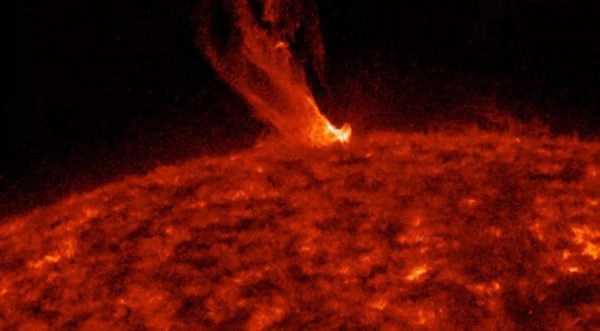UC Berkeley Lab to build NOAA space weather instrument – SpaceNews
by —

SAN FRANCISCO – The National Oceanic and Atmospheric Administration awarded a $7.5 million contract to the Space Sciences Laboratory at the University of California, Berkeley, to design, build and test an ion sensor for the Space Weather Follow-On (SWFO) Lagrange-1 mission.
Under the contract announced May 1, the Space Sciences Laboratory will build the Supra Thermal Ion Sensor in addition to supporting launch and on-orbit checkout of the instrument.
The Supra Thermal Ion Sensor is designed to measures solar energetic particles and provide advance warning if a shock wave produced by those particles is headed for Earth, where it could “rattle the magnetosphere” and threaten communications links, said Davin Larson Supra Thermal Ion Sensor instrument lead and Space Sciences Laboratory project scientist.
Larson also serves as instrument lead for Solar Energetic Particle (SEP), a sensor launched in 2013 on NASA’s Mars Atmosphere and Volatile Evolution. SEP measures the impact of those particles on the Martian atmosphere.
SWFO, a high priority mission for NOAA’s Space Weather Prediction Center, is designed to gather solar wind data and coronal mass ejection imagery when the current generation of space weather instruments stops working.
SWFO is a scheduled to launch in 2024 as a rideshare on the NASA Interstellar Mapping and Acceleration Probe, a mission to observe the acceleration of energetic particles and the interaction of solar wind and the interstellar medium.
NASA’s Goddard Space Flight Center in Greenbelt, Maryland, serves as the flight system procurement agent for the SWFO program.
NOAA awarded a $12.9 million contract in April to the Southwest Research Institute to design and build the SWFO magnetometer.
Congress provided NOAA funding in the 2020 budget for SWFO, a mission intended to carry on work performed by NOAA’s Deep Space Climate Observatory launched in 2015 and the joint European Space Agency-NASA Solar and Heliophysics Observatory launched in 1995.
Please enable JavaScript to view the comments powered by Disqus.






